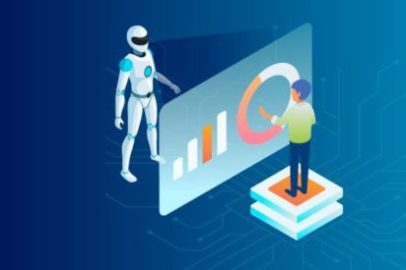Relationship Between Data Science And Artificial Intelligence

If you are in the IT area, you know that Artificial intelligence (AI) has ceased to be something of science fiction for years and is present in our daily lives.
What Is Data Science?
Data science is an interdisciplinary field that studies and analyzes structured and unstructured data to extract knowledge, detect patterns and gain insights. The main scientific disciplines that the field draws upon are mathematics, statistics, and computation. Data, in turn, is nothing more than a value assigned to something. This value is granted through documented observations or measurement results.
This definition of data is pretty broad. Here, when we talk about data, we refer to the traces left by users in the online environment when accessing websites or using applications on mobile devices.
Returning to data science, the area has gained notoriety in recent decades with the massification of the internet and the dissemination of the concept of Big Data. The term refers to the collection and strategic analysis of a large volume of data, which is transformed into useful information for public entities and the private sector.
How Artificial Intelligence Works
Artificial intelligence works from the combination of algorithms and a large volume of data. An algorithm is a set of rules and logical procedures previously defined to reach a determined objective, following a finite number of steps.
The union between data and algorithms allows artificial intelligence to read and interpret patterns and learn autonomously without human action. This is possible thanks to machine learning or machine learning.
Other technologies employed in artificial intelligence are deep learning and Natural Language Processing (NLP):
- Deep learning: It is a more complex variant of machine learning. It employs artificial neural networks distributed in abstraction layers through which data circulates. It is used extensively in pattern identification, imagery and speech recognition, and data processing.
- Natural Language Processing (NLP): studies and develops reproductions of processes linked to the functioning of human language. In practice, attempts are made to make computers understand texts entirely, recognizing the context, extracting information and offering summaries. The PLN is widely used in customer service sectors.
The term “artificial intelligence” refers to a machine’s ability to perform activities intelligently. This device must simulate human skills such as analysis, reasoning and perception of the environment.
Data Science And Artificial Intelligence
Data science and artificial intelligence are complementary areas that borrow concepts and tools from each other, particularly those used in machine learning. While providing input for machine learning, data scientists draw on AI processing and patterning capabilities to develop their work.
To exemplify the relationship between data science and artificial intelligence, imagine a job description for a data scientist and another for an AI analyst. The IT professional will first need to know AI tools to classify data and make predictions, such as deep learning algorithms.
Second, the title of the position will reveal the difference between the candidate’s work and a data scientist: Deep Learning Scientist, Machine Learning Engineer, NLP Scientist and so on. Even so, whoever fills the vacancy will likely use data science tools daily, such as R and Python.
Below you can find some more examples of this exchange of tools between data science and artificial intelligence:
Text Mining
Semi-automatic process of extracting information from unstructured data. Document datasets are created, whose information is transformed into a numerical matrix.
Time Series Forecasting
Similar to statistical extrapolation, this artificial intelligence feature is used to make predictions. Models are created from the collected historical data.
Recommendation Systems
Based on machine learning algorithms, this artificial intelligence technology offers item recommendations to a given user. It relies on information provided by the data scientist to discover patterns of consumer behavior.
KNN (K-Nearest Neighbors)
KNN is a supervised learning algorithm widely used in data mining and machine learning. It is considered a classifier, performing learning through the similarity between data.
Bayesian Inference
Originating in statistics, Bayesian inference is fundamental in machine learning because it offers an evaluation of hypotheses based on likelihood. Often used in data mining.
Decision Tree
Like flowcharts, a decision tree combines the best of data science and artificial intelligence to offer a machine learning method. Decision trees are commonly employed in classification and prediction tasks.
Also Read: Intelligent Logistics: Why Use Big Data, AI And IoT To Differentiate
